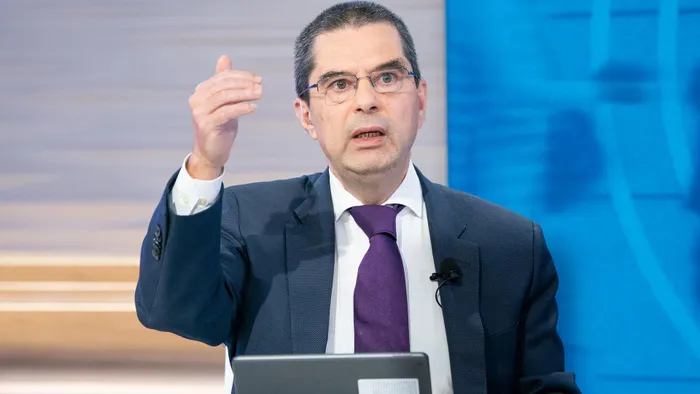IMF urges smarter public spending as global debt to surpass 100% of GDP by 2029
GLOBAL ECONOMY

Vitor Gaspar, director of the IMF fiscal affairs department, said public debt continues to rise as governments face mounting fiscal strain from higher defense spending, aging populations, and elevated interest rates.
Image: Supplied
The International Monetary Fund (IMF) has issued a stark warning that global public debt is on track to exceed 100% of GDP by 2029, reaching its highest level since the aftermath of World War II.
The Fund’s latest Fiscal Monitor report, released on Wednesday in Washington, D.C., paints a troubling picture of deteriorating fiscal conditions, rising borrowing costs, and deepening debt vulnerabilities across both advanced and developing economies.
Vitor Gaspar, director of the IMF fiscal affairs department, said public debt continues to rise as governments face mounting fiscal strain from higher defense spending, aging populations, and elevated interest rates.
“Global public debt prospects and risks have worsened since our last meeting in April. In such a scenario, debt would be at its highest level since 1948,” Gaspar said.
“Moreover, the distribution of risks is tilted towards debt accumulating even faster — with a 5% probability that global debt could reach 124% of GDP by 2029.”
The IMF’s fiscal risk assessment map, based on its latest debt sustainability framework, shows a highly uneven global debt landscape.
Many advanced economies, including Canada, China, France, Italy, Japan, the United Kingdom, and the United States, already have — or are projected to reach — debt levels above 100% of GDP.
These countries, however, benefit from deep and liquid sovereign bond markets and more flexible policy frameworks, leading to moderate (yellow) or low (green) fiscal risk ratings.
In contrast, many emerging markets and low-income countries face “tougher fiscal challenges,” the Fund warned. Despite having debt ratios often below 60% of GDP, they suffer from limited financing options, weaker institutions, and low debt tolerance.
The IMF estimates that 55 countries are currently assessed at high (pink) or distressed (red) levels of fiscal risk.
Beyond the sheer size of debt, the cost of borrowing has become a major source of concern.
After more than a decade of near-zero interest rates following the global financial crisis and the COVID-19 pandemic, Gaspar said rising rates are now straining government budgets.
“Interest spending is estimated to increase to 2.9% of GDP in 2025, up from 2% in 2020, and is projected to keep rising through the end of the decade. The financial environment is also exigent,” Gaspar said.
"Higher funding costs are eroding fiscal space, leaving governments more vulnerable to shocks."
The Fund also warned of broader financial risks, including overstretched asset valuations and the potential for market corrections. A major concern, it said, would be a “fiscal-financial feedback loop” — where liquidity stress in financial markets amplifies fiscal fragility, potentially triggering a broader crisis.
Governments worldwide are also facing rising public spending pressures, from defense and disaster response to aging populations and climate adaptation, while political resistance to higher taxes remains strong.
“The inescapable conclusion,” Gaspar cautioned, “is that starting from too-high deficits and debt, the persistence of spending above tax revenues will push debt to ever-higher heights, threatening fiscal sustainability and financial stability.”
The IMF urged policymakers to act now to restore fiscal discipline and rebuild buffers before the next crisis hits.
The Fund recommended that countries shift spending toward growth-enhancing areas — such as education, infrastructure, and technology — without increasing overall budgets. Improving spending efficiency, it said, can further amplify growth benefits while maintaining fiscal discipline.
Model simulations cited in the report show that raising infrastructure investment by just 1% of GDP, while cutting less productive government consumption, could increase long-term output by 1.5% in advanced economies and 3.5% in developing economies.
Boosting education spending could yield even higher returns — up to 6% higher output in emerging markets over time. Closing efficiency gaps could add another 1.5% to 7.5% in output growth across different income groups.
“Fiscal policy is structural policy,” Gaspar emphasized. “Reallocating public spending to growth-friendly investments can raise the economy’s productive capacity and strengthen long-term prospects.”
The IMF urges countries to pursue institutional and governance reforms that promote transparency, accountability, and better expenditure control.
Among its recommendations are combating corruption and strengthening public procurement systems, improving project appraisal and ensuring adequate maintenance funding for public investments, adopting multiyear budget frameworks that link long-term strategy to annual spending, and leveraging digital tools to improve fiscal management and service delivery.
It also recommends engaging the private sector through outsourcing and partnerships to boost efficiency, while managing fiscal risks carefully.
BUSINESS REPORT